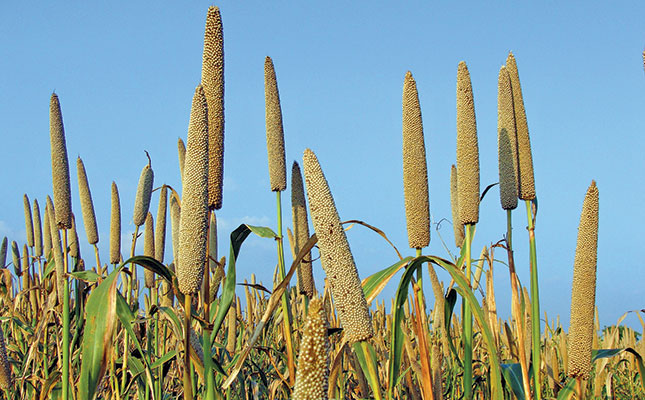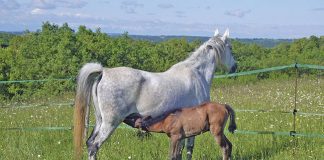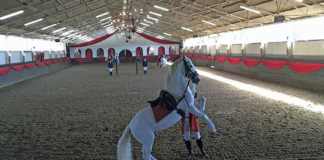
Photo: Wikimedia Commons
Pearl millet is an erect annual plant, up to 3m tall. It originated in central tropical Africa and the plant was domesticated as a food crop between 4 000 and 5 000 years ago along the southern margins of the central highlands of the Sahara. It has since become widely distributed across the semi-arid tropics of Africa and Asia.
Pest control
The greatest pest threats for the pearl millet producer are chinch bugs, stinkbugs, nematodes and birds.
Chinch bugs
The female lays eggs in summer, and these hatch into nymphs within two weeks. The nymphs begin to suck the sap from host plants, while injecting chemicals into the plant that clog the vascular system. The area around the feeding puncture usually turns yellow.
Inspect your lands every five to seven days until heading. Apply a recommended insecticide after heading.
Stinkbugs
These require control on developing grain heads. They are most active when pearl millet is planted from July to August. Stinkbug feeding causes small, shrivelled seeds, the plants become stunted, and the fruit becomes discoloured. These pests are also vectors for certain plant diseases. Stinkbugs can be controlled with registered insecticides.
Nematodes
Pearl millet hybrids differ in their resistance to nematodes. Primary damage is to the roots of the plant, and the degree of damage varies with the age of the plant being attacked.
Symptoms are most severe when the feeding occurs during the first few weeks after planting. The roots are greatly reduced, and end up stubby, with dark, shrunken lesions, particularly at the tips. If the root tip is destroyed, new roots may be produced above the damaged area.
Plants not severely damaged by the initial feeding may recover and produce near-normal yield under optimal growing conditions. To control this pest, rotate pearl millet with nematode-resistant crops.
Disease control
Diseases in pearl millet are not widespread. The most important are mildew, seed rot, rust and grain mould.
Use a recommended fungicide to control mildew and seed rot at planting. Consult the label before use.
Rust can be a major problem. However, it occurs late in the season, so planting early will minimise yield and grain-quality losses. A fungicide is not recommended for pearl millet.
Grain moulds develop when grainfill and maturation occur in wet or humid conditions, and may reduce the quality of the grain. Harvest the millet as early as possible after maturity.
Source: ‘Pearl millet (Pennisetum glaucum)’.











